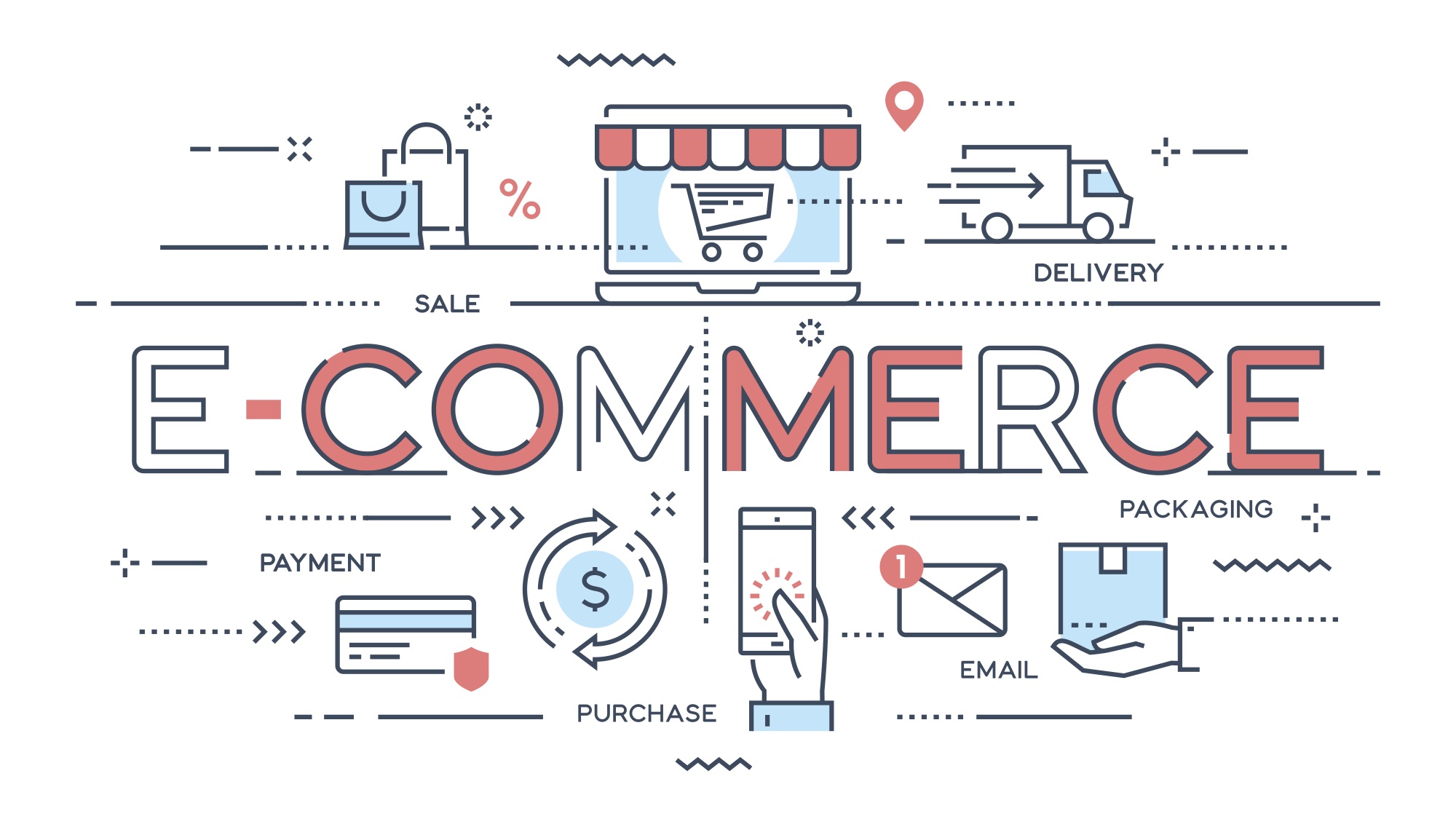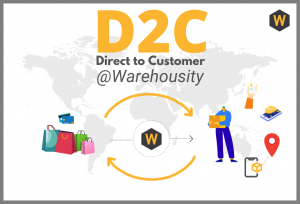Discovering the Prospective of D2C Ecommerce: A Comprehensive Overview for Organizations
The D2C ecommerce design provides a substantial change in exactly how brands engage with customers. It enables business to bypass typical retail networks, fostering much deeper links and potentially enhanced earnings margins. Nevertheless, this approach is not without its intricacies. Recognizing the nuances of D2C ecommerce is vital for brands aiming to prosper. What techniques can they take on to navigate this progressing landscape properly? The solutions may redefine their company methods.
Comprehending the D2C Ecommerce Design

Trick Perks of D2C Ecommerce for Brands
The D2C ecommerce version provides brands significant advantages, especially pertaining to boosted revenue margins. By getting rid of intermediaries, companies can keep a larger share of sales profits. Furthermore, this straight partnership with customers cultivates improved brand commitment, motivating repeat purchases and long-lasting engagement.
Enhanced Profit Margins

Enhanced Brand Loyalty
Structure on the economic benefits of D2C ecommerce, improved brand commitment becomes one more essential benefit for companies engaging directly with consumers. By developing a direct connection, brands can cultivate much deeper partnerships with their consumers, gaining insights into choices and actions. This straight communication permits even more tailored advertising and marketing approaches, which resonate highly with customers. Furthermore, brand names have the chance to regulate their messaging and consumer experience, enhancing brand values and developing depend on. When clients feel an individual connection, they are a lot more most likely to return, support for the brand, and take part in community interaction. Ultimately, enhanced brand loyalty not just drives repeat purchases but additionally grows an enthusiastic customer base, further solidifying a brand name's position on the market.
Challenges Encountered by D2C Brands
D2C brands experience a number of substantial difficulties that can impact their success. Inventory management issues can lead to equip scarcities or excess, complicating procedures and client fulfillment. In addition, marketing spending plan constraints frequently limit the ability to effectively engage and reach target market.
Inventory Monitoring Issues
Efficient inventory monitoring presents a formidable obstacle for lots of brands operating in the direct-to-consumer (D2C) room. These brands often face varying need, which can lead to overstock or stockouts, ultimately affecting customer contentment and income. Furthermore, the lack of advanced inventory tracking systems can lead to discrepancies in between actual supply degrees and reported information, complicating order fulfillment. The diverse variety of products D2C brand names normally supply also complicates inventory monitoring, as variations in styles, dimensions, and shades call for even more meticulous oversight. Moreover, lots of D2C businesses might fight with restricted warehousing capacities, bring about ineffective use area and sources. Efficient inventory monitoring stays an important obstacle for D2C brands intending for sustainable growth and operational performance.
Advertising And Marketing Budget Plan Constraints
Steering advertising budget constraints is a substantial obstacle for lots of direct-to-consumer (D2C) brands. Limited funds typically restrict these companies' ability to purchase comprehensive advertising strategies, leading to decreased visibility in a competitive market. D2C brand names often face the demand to make best use of return on financial investment (ROI) while targeting specific target markets successfully. This obstacle is exacerbated by rising prices in digital advertising and marketing and the need to assign funds across several channels, including social media sites, internet search engine, and email advertising and marketing. Subsequently, several D2C brands must innovate cost-efficient advertising solutions, leveraging natural development techniques and influencer collaborations. Eventually, efficiently maneuvering these budget plan restrictions is important for maintaining growth and accomplishing long-term earnings in the evolving ecommerce landscape.
Methods for Building a Successful D2C Ecommerce Company
As consumers significantly seek direct connections with brand names, developing an effective D2C ecommerce business needs a tactical technique that focuses on consumer interaction and trust fund. One effective strategy is to produce engaging brand narratives that reverberate with target market, fostering emotional links. Utilizing social networks systems can boost visibility and assist in two-way communication, enabling brands to engage directly with customers.Moreover, personalized experiences via customized advertising and marketing initiatives can substantially boost consumer retention and commitment. Implementing loyalty programs and using unique offers can even more incentivize repeat purchases.Streamlining the buying process is YOURURL.com essential, making sure a straightforward user interface that enhances the shopping experience. Additionally, clear interaction regarding shipping and returns constructs trust fund and urges customer confidence.Finally, actively seeking consumer feedback and responding to it shows a commitment to renovation and customer fulfillment, vital elements in the affordable D2C landscape.
Leveraging Technology for Improved Customer Experience
In today's affordable D2C ecommerce landscape, modern technology plays a critical function in forming client experiences. Companies progressively use advanced devices such as expert system, chatbots, and individualized formulas to enhance communications and improve the purchasing process. By incorporating these innovations, brands can provide customized product referrals based upon specific preferences and buying actions, fostering a more interesting experience.Moreover, responsive web site layouts and mobile applications ensure that customers can access services effortlessly across various gadgets. Boosted settlement remedies, including one-click check outs and electronic wallets, better simplify deals, making it simpler for customers to make purchases.Data analytics additionally enables businesses to gather insights right into customer actions, enabling constant enhancement of services and offerings. Generally, leveraging modern technology not just improves consumer complete satisfaction yet also cultivates loyalty, eventually driving long-term success in the D2C ecommerce industry.
Advertising Tactics to Drive D2C Sales
Exactly how can brand names successfully catch the interest of customers in a saturated market? To prosper in the direct-to-consumer (D2C) landscape, brands need to use targeted marketing strategies. Utilizing social media systems, brand names can involve consumers via interactive content, influencer partnerships, and user-generated messages. Customized email campaigns can likewise foster a sense of link, offering tailored promotions based on consumer habits and preferences.Moreover, storytelling plays an important duty in setting apart a brand's story, making it remarkable and relatable. Brand names need to spend in search engine optimization (SEO) to boost exposure, guaranteeing their products are quickly discoverable online. In addition, leveraging data analytics permits organizations to improve their marketing approaches and understand customer patterns much better. Ultimately, a multi-channel method that combines creativity with data-driven understandings can substantially improve D2C sales, permitting brands to stand out in a jampacked marketplace.
Future Fads in D2C Ecommerce
With the quick advancement of technology and customer preferences, the future of D2C ecommerce is positioned for substantial change. Arising trends suggest a change towards hyper-personalization, where brand names leverage data analytics to tailor offerings to specific consumer requirements. This customization enhances consumer experiences, promoting loyalty and engagement.Moreover, sustainability is coming to be a vital element, with customers significantly favoring brand names that focus on environment-friendly practices - D2C Ecommerce Agency. Business are expected to embrace clear supply chains and sustainable materials to meet this demand.The combination of expert system and boosted fact will furthermore reinvent the purchasing experience, allowing customers to imagine items in their environments prior to purchase. Furthermore, social commerce is prepared for to expand, as platforms like Instagram and TikTok promote smooth shopping experiences straight within social media.These trends collectively indicate a dynamic future for D2C ecommerce, highlighting customer-centric strategies and cutting-edge technologies that redefine consumer interactions
Regularly Asked Questions
What Industries Advantage A Lot Of From D2C Ecommerce?
The present concern highlights markets that prosper via direct-to-consumer (D2C) ecommerce. Extremely, fashion, charm, electronics, and food industries take advantage of D2C models to increase brand loyalty, enhance consumer relationships, and optimize profit margins successfully.
Just How Do Shipping Expenses Impact D2C Pricing Methods?
Shipping costs significantly influence D2C rates approaches. Organizations have to stabilize these costs with competitive prices, thinking about client expectations and earnings margins. have a peek at this website Effective monitoring of shipping can boost consumer fulfillment and drive sales in direct-to-consumer models.
What Settlement Choices Should D2C Companies Deal?
D2C services must supply diverse settlement alternatives, consisting of credit/debit cards, electronic purses, and buy currently, pay later solutions. This variety improves consumer benefit, increases conversion rates, and satisfies different consumer preferences in the online buying landscape.
Just How Can D2C Brands Deal With Customer Returns Effectively?
D2C brands can take care of consumer advice returns properly by carrying out straightforward return policies, offering pre-paid delivery labels, and guaranteeing punctual refunds (D2C Ecommerce Agency). Clear interaction and streamlined processes enhance consumer complete satisfaction and motivate repeat business
What Lawful Factors To Consider Exist for D2C Ecommerce Procedures?
Lawful considerations for D2C ecommerce operations consist of compliance with consumer protection laws, information personal privacy policies, copyright civil liberties, and taxation requirements. Brands should navigate these intricacies to prevent lawful challenges and assure smooth operations. By removing intermediaries, D2C brands can offer competitive prices and cultivate an extra intimate partnership with their customers.The D2C version is characterized by its dependence on electronic systems, allowing brand names to make use of social media, on-line markets, and their own websites to engage with consumers straight. D2C ecommerce assists in the collection of beneficial consumer information, allowing brands to customize their offerings and advertising and marketing approaches properly, inevitably driving sales and raising margins. In addition, brand names have the possibility to manage their messaging and client experience, enhancing brand worths and developing trust. As customers significantly look for direct links with brands, establishing a successful D2C ecommerce organization needs a strategic method that focuses on consumer interaction and trust fund. D2C brands can deal with client returns successfully by carrying out straightforward return policies, offering prepaid delivery tags, and guaranteeing punctual refunds.
Comments on “How a D2C Ecommerce Agency Future-Proofs Your Business Against Retail Disruption”